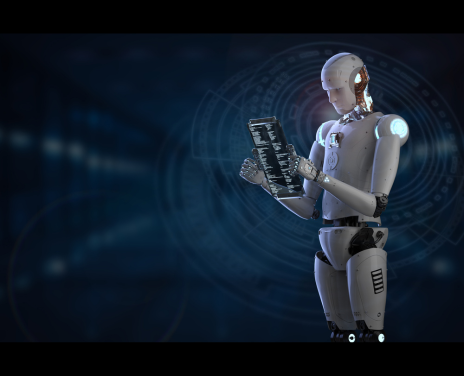AI took a giant leap forward after Google’s AI received some new features that allow it to analyze images.
Users can now upload pictures of documents, artwork, drawings, clips, and even selfies, then set tasks like `Summarize this chart` or `What’s wrong in this image?` along with the question `What is this?`, and the AI will respond in detail, correctly giving answers with appropriate context. This is possible with the newest Gemini family multimodal models of Google that are capable of processing text, images, videos, and code simultaneously.
Exploring this deepens our understanding of it, while also providing insight on the magnitude that the productivity, education, and search will have, along with the business world.
Let’s move on from Google flexing their latest advancement in vision AI technology to diving headfirst into business and searching out the ever-so-unpleasant implication alongside the productivity changes for us to consider.
What Just Happened?
Everything previously mentioned indicates that every step taken with multimodal artificial intelligence technology will further shift the reality we live in today into a new dimension. The biggest advancement Google showcases with this new AI feature is the ability to merge vision, language, and reasoning all at once with mere real-time interaction.
This makes it quite the innovation over deep learning as deep neural networks versed machines into unlocking the pedagogical gates of active learners brought open for the world; in other words, ultra intelligent technology.
This capability is present in some Google products, as well as in their developer tools, such as Google Cloud AI and Vertex AI.
What goes on behind the ‘eyes’ of Google AI?
Multimodal machine learning gives AI the ability to understand images, text, or any form of data, and is responsible for the power behind this vision extension.
Google AI’s methods resemble those used in Vision Transformers and Large Language Models, (LLMs) GPT and Gemini. These models employ vast datasets of texts and images, learning the context the prominent visual elements tend to depict.
For example:
- A picture of a dog with a bone.
It doesn’t just see the dog and the bone. It can also appreciate the context whereby describing it or responding to queries about those items
- A messy receipt image.
The AI is capable of resolving complex tasks such as narrating the total, vendor, and items bought.
- Take a perplexing graph or a chart.
With AI assistance, it would be possible to provide the insights in a simpler and more comprehensible manner.
The Scope of Life Application
The potential for combining image recognition as well as spoken language understanding is virtually limitless.
1. Visual Search Revolution
With the recent development, searching for anything will no longer be restricted to key words alone. Shoppers wishing to identify certain plants, brazen foreigners who wish to have their signs translated, and those grappling with sophisticated diagrams will find Google AI useful.
2. Education & Learning
The students can take pictures of math problems or science diagrams and receive detailed explanations. Learning visually now makes it more engaging and sophisticated.
3. Business & Productivity
Professionals can now take screenshots of their invoices, receipts, forms, or even dashboards and request the AI to give a summary or explanation. Imagine having an analyst or assistant who works 24/7 without any rest.
4. Creative & Design
Designers and artists can receive critiques of their sketches, recommend changes, or even ask the AI to clarify the meaning or style behind a particular painting.
5. Accessibility
Users who are blind can take pictures of their environment and get detailed descriptions of the surroundings in front of them. This is a remarkable development towards a digitally inclusive future.
What About Privacy and Security?
As AI starts “seeing” anything, the matter of privacy becomes a crucial factor. All image processing is said to follow strict data usage policies and any user-uploaded data is either anonymized or encrypted based on the use case.
Like always, companies need to watch their steps, especially those in the healthcare, finance, and legal industries where image data could be sensitive. Multimodal AI Is The Bigger Picture!
Adding new features is never as important as adapting to the direction AI is heading.
The evolution of AI will now include:
- Seeing (Images and Videos).
- Hearing (Audio).
- Understanding (Text and Code).
- Giving Contextual Responses (Naturally).
It appears that companies such as Google are fighting hard to achieve the reign of AI—an Assistant that interacts with the world in the way humans do, with all five senses.
Closing Thoughts: We Are Witnessing Another New Form of Intelligence
This advancement in Google’s AI technology goes above and beyond simply identifying what a picture depicts; it relates to grasping its meaning and being able to engage with it. The shift in AI from reading to seeing enables users to interact with technology at a higher level. Increasingly refined user experiences will enable deeper, natural engagement with digital interfaces, and in turn, provide more contextually intelligent, accurate responses. Businesses will experience never before seen extremes of automation, customer service, accessibility, and innovation.
Here at Aixcircle, we see frontiers where others simply see the next headline. We commend businesses that proactively seize these technologies because with the evolution of AI, which seamlessly integrates the digital and physical worlds, those will have the strongest competitive advantages.


